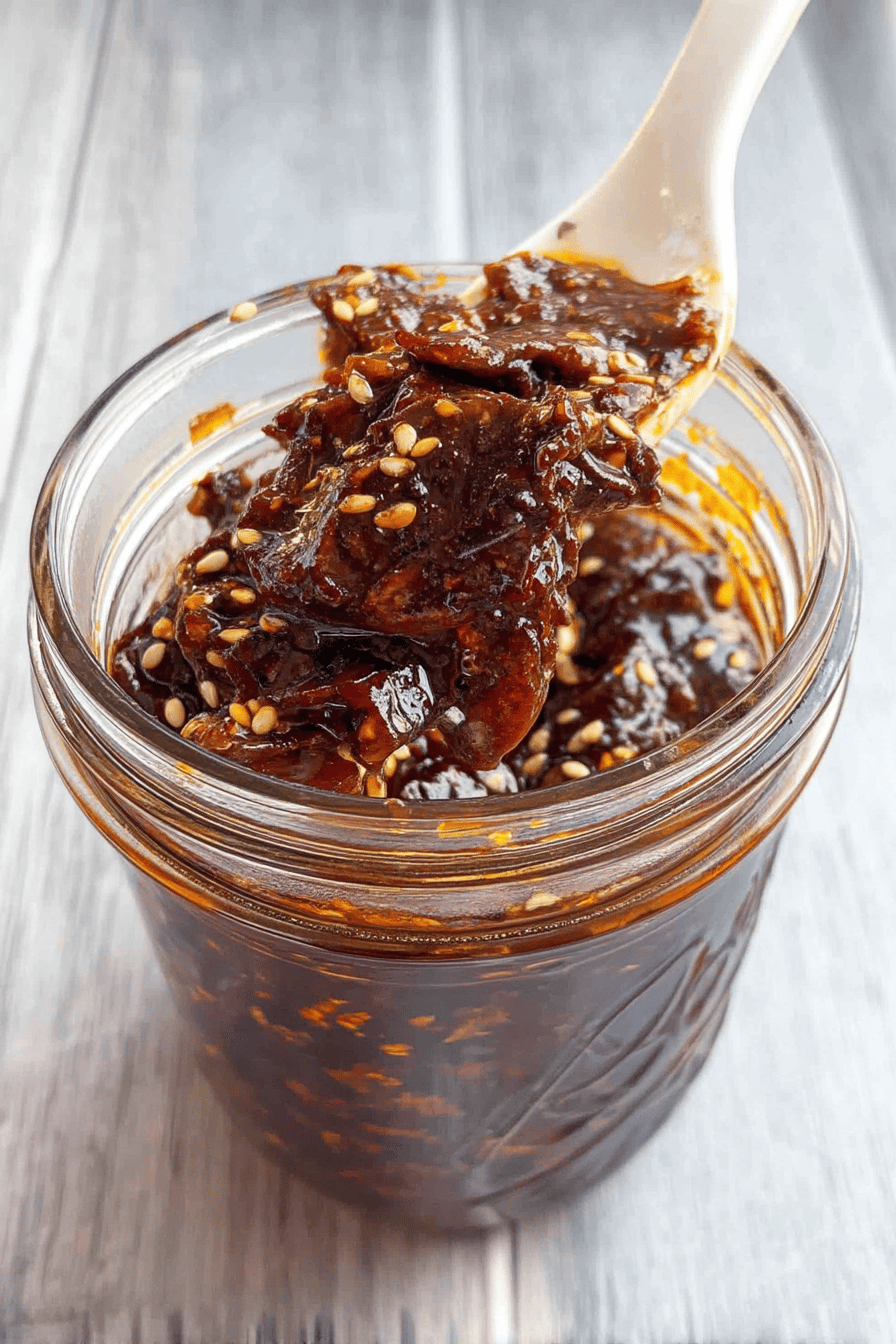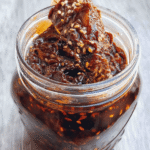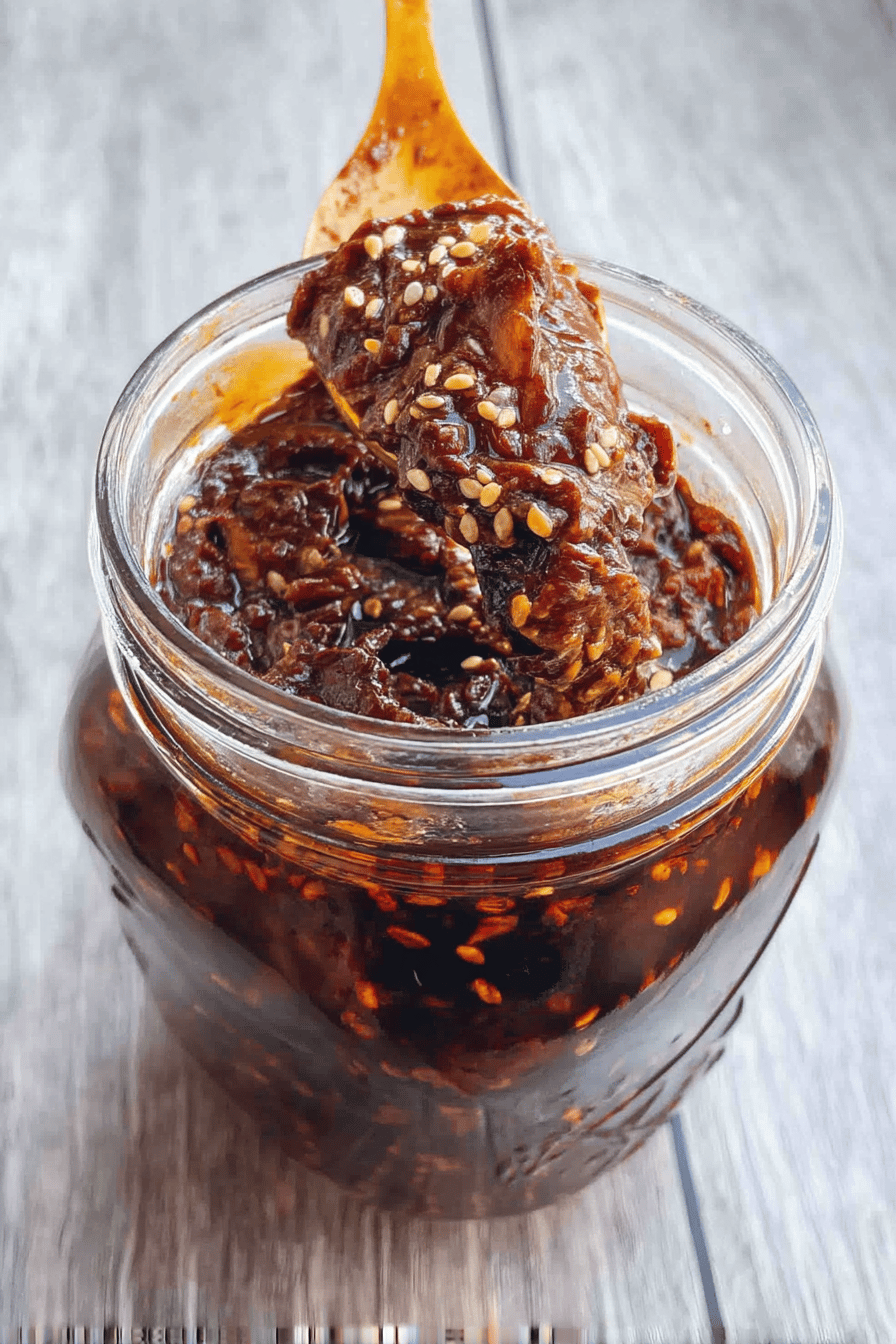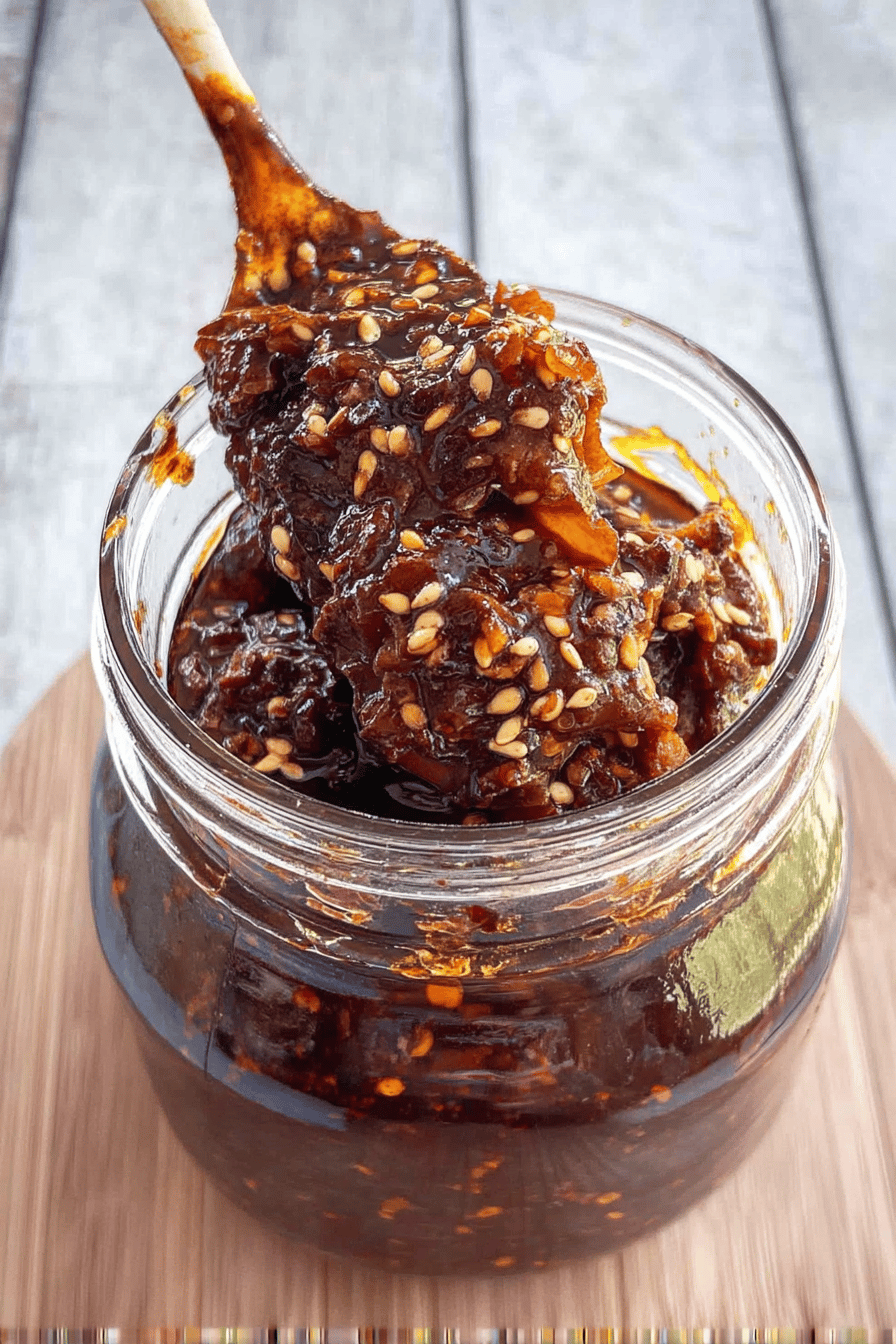Why You’ll Love This bulgogi sauce
- Ease of preparation: This bulgogi sauce recipe is incredibly simple and quick to prepare, making it ideal for busy weeknights. With minimal ingredients and straightforward steps, you can have the sauce ready in under 10 minutes, perfect for fast-cooking meals.
- Health benefits: Packed with wholesome ingredients, the bulgogi sauce provides nutritional advantages such as antioxidants from garlic and ginger, and lower sodium options when adjusted accordingly. It promotes wellness by using natural sweeteners and avoiding artificial additives.
- Versatility: This bulgogi sauce adapts easily to various dietary preferences including vegan, gluten-free, and low-calorie diets. Its balanced flavor complements a wide range of proteins and vegetables, making it suitable for many meal types.
- Distinctive flavor: The unique blend of sweet, savory, and umami notes in this bulgogi sauce stands out from typical marinades, delivering a rich and authentic Korean flavor that enhances any dish.
Jump To
- 1. Why You’ll Love This bulgogi sauce
- 2. Essential Ingredients for bulgogi sauce
- 3. How to Prepare the Perfect bulgogi sauce: Step-by-Step Guide
- 4. Dietary Substitutions to Customize Your bulgogi sauce
- 5. Mastering bulgogi sauce: Advanced Tips and Variations
- 6. How to Store bulgogi sauce: Best Practices
- 7. FAQs: Frequently Asked Questions About bulgogi sauce
- 8. bulgogi sauce
Essential Ingredients for bulgogi sauce
- 4 tablespoons soy sauce – provides salty umami base and rich depth
- 2 tablespoons gochujang (Korean fermented chili paste) – adds balanced sweet and spicy notes (can substitute chili garlic sauce or sriracha)
- 2 tablespoons rice wine vinegar – introduces tanginess and acidity (apple cider or white wine vinegar as alternatives)
- 2 tablespoons sesame oil – delivers nutty aroma and richness
- 1 tablespoon honey or brown sugar – natural sweetener balancing savory flavors
- 1 teaspoon fresh chopped ginger (or 2 tablespoons grated fresh ginger) – lends warm spice and aids digestion
- 3 cloves garlic, minced – enhances pungent, savory profile
- 1 tablespoon red pepper flakes (optional) – adds customizable heat
- 1 spicy red pepper, minced (optional) – for extra kick
- Optional: ½ grated Asian pear (or Bosc/regular pear or sweet apple) – tenderizes meat and adds natural sweetness
Special Dietary Options
- Vegan: Use tamari or coconut aminos in place of soy sauce for a plant-based, gluten-free option.
- Gluten-free: Substitute regular soy sauce with certified gluten-free tamari sauce.
- Low-calorie: Replace brown sugar or honey with low-calorie sweeteners like stevia or erythritol.
How to Prepare the Perfect bulgogi sauce: Step-by-Step Guide
First Step: Gather and Prepare Ingredients
Measure all the ingredients accurately. Peel and grate the Asian pear or alternative fruit if using. Mince garlic and grate fresh ginger for maximum freshness and flavor.
Second Step: Combine Primary Sauce Components
In a medium bowl, whisk together soy sauce, brown sugar or honey, grated pear, minced garlic, and grated ginger until the sugar is fully dissolved for a smooth base.
Third Step: Add Oils and Aromatics
Fold in sesame oil, gochujang (or chili garlic sauce/sriracha alternative), rice wine vinegar, and chopped green onions gently to preserve texture and integrate flavors evenly.
Fourth Step: Adjust Heat and Flavor
Add optional red pepper flakes and minced fresh red pepper to control spice levels according to personal taste. Taste and tweak sweetness or acidity if desired.
Final Step: Rest and Use
Allow the bulgogi sauce to rest for at least 15 minutes to let the flavors meld beautifully; longer resting, ideally overnight, deepens the flavor. Use the sauce to marinate thinly sliced beef, chicken, pork, or lamb for 30 minutes to overnight. Cook over medium-high heat by grilling or sautéing until desired doneness.
Dietary Substitutions to Customize Your bulgogi sauce
Protein and Main Component Alternatives
- Substitute beef with chicken, pork, tofu, tempeh, or seitan to suit vegetarian or vegan diets.
- Use mushrooms as a meaty vegetable alternative to add umami without animal protein.
Vegetable, Sauce, and Seasoning Modifications
- Swap green onions with chives or leeks to vary aromatic flavors.
- Replace soy sauce with gluten-free tamari or coconut aminos to cater to gluten-free or allergy-sensitive individuals.
- Adjust sweetness by using honey, agave syrup, or lowering sugar content for lower-calorie versions.
- Increase or reduce heat by adjusting amounts of gochujang, red pepper flakes, or fresh hot peppers, allowing flexibility in spice intensity.
Mastering bulgogi sauce: Advanced Tips and Variations
Marinate proteins longer for deeper flavor infusion and tenderness. Using a cast iron pan or grill enhances char and smoky notes.
- Pro cooking techniques: Baste marinated meat during cooking to prevent drying and build layers of caramelization.
- Flavor variations: Add grated pineapple for tropical sweetness, sprinkle toasted sesame seeds for crunch, or include a splash of mirin for brightness.
- Presentation tips: Garnish dishes with sliced green onions, sesame seeds, and fresh herbs like coriander or perilla leaves for traditional flair.
- Make-ahead options: Prepare bulgogi sauce in larger batches and refrigerate for up to a week or freeze in portions for easy meal prep.
How to Store bulgogi sauce: Best Practices
| Storage Method | Details |
|---|---|
| Refrigeration | Store bulgogi sauce in a tightly sealed container in the refrigerator for up to one week to preserve freshness. |
| Freezing | Freeze portions of bulgogi sauce in ice cube trays or small containers. Thaw overnight in the fridge before use. |
| Reheating | Warm sauce gently over low heat, avoiding boiling to maintain flavor and texture without separation. |
| Meal Prep Considerations | Label and portion sauce for easy addition to meals. Use within safe storage windows to reduce waste. |

FAQs: Frequently Asked Questions About bulgogi sauce
What ingredients do I need to make traditional bulgogi sauce?
To make traditional bulgogi sauce, you will need soy sauce, sesame oil, minced garlic, grated ginger, brown sugar or honey, rice wine or mirin, and black pepper. Some recipes also include gochujang (Korean chili paste) for mild heat, and grated Asian pear or apple to tenderize the meat and add natural sweetness. These ingredients combine to create a balanced sweet, savory, and slightly tangy flavor typical of bulgogi marinade.
How long should I marinate meat in bulgogi sauce for the best flavor?
For optimal flavor and tenderness, marinate the meat in the bulgogi sauce for at least 30 minutes. However, marinating overnight in the refrigerator allows the flavors to penetrate the meat more deeply and results in a richer taste. Avoid marinating for more than 24 hours, as the acidity in the sauce can start to break down the texture too much.
Can bulgogi sauce be used with meats other than beef?
Yes, bulgogi sauce pairs well with several types of meat beyond beef, including pork, chicken, and even seafood such as shrimp. While beef cuts like short rib or flank steak are traditional, the sauce’s sweet and savory profile complements other proteins, making it versatile for different dishes. Adjust marinating times based on the meat chosen to avoid over-tenderizing.
Where can I buy authentic gochujang for bulgogi sauce?
Authentic gochujang is commonly available at Asian grocery stores and is often stocked in the international or Asian food sections of large supermarkets. It is also widely sold through online retailers specializing in Korean ingredients. When purchasing, look for a sealed container with clear labeling to ensure freshness and authentic flavor.
Is bulgogi sauce only used for marinating meat, or can it be used in other ways?
While bulgogi sauce is traditionally used as a marinade for grilled meat, it also works well as a dipping sauce for lettuce wraps or a flavorful stir-fry sauce. You can drizzle it over cooked vegetables or rice bowls to add a sweet and savory kick. Its versatility makes it a great addition to many Korean-inspired meals beyond just bulgogi itself.

bulgogi sauce
- Total Time: 40 minutes to overnight
- Yield: 4 servings
- Diet: Gluten-free option (use gluten-free soy sauce)
Description
🍲 Experience the rich, balanced flavors of Bulgogi Sauce that bring sweet, savory, and spicy notes to your meals.
🥩🍤 Perfect for marinating steak and shrimp, this sauce creates a quick and delicious stir fry dinner that’s full of flavor.
Ingredients
– 4 tablespoons soy sauce
– 2 tablespoons gochujang
– 2 tablespoons rice wine vinegar
– 2 tablespoons sesame oil
– 1 tablespoon honey
– 1 teaspoon fresh chopped ginger
– 3 cloves garlic, minced
– 1 tablespoon red pepper flakes
– 1 spicy red pepper, minced
– ½ grated Asian pear
Instructions
First Step: Gather and Prepare Ingredients Measure all the ingredients accurately. Peel and grate the Asian pear or alternative fruit if using. Mince garlic and grate fresh ginger for maximum freshness and flavor.
Second Step: Combine Primary Sauce Components In a medium bowl, whisk together soy sauce, brown sugar or honey, grated pear, minced garlic, and grated ginger until the sugar is fully dissolved for a smooth base.
Third Step: Add Oils and Aromatics Fold in sesame oil, gochujang (or chili garlic sauce/sriracha alternative), rice wine vinegar, and chopped green onions gently to preserve texture and integrate flavors evenly.
Fourth Step: Adjust Heat and Flavor Add optional red pepper flakes and minced fresh red pepper to control spice levels according to personal taste. Taste and tweak sweetness or acidity if desired.
Final Step: Rest and Use Allow the bulgogi sauce to rest for at least 15 minutes to let the flavors meld beautifully; longer resting, ideally overnight, deepens the flavor. Use the sauce to marinate thinly sliced beef, chicken, pork, or lamb for 30 minutes to overnight. Cook over medium-high heat by grilling or sautéing until desired doneness.
Notes
🥢 Use thinly sliced meat for optimal marinade absorption and faster cooking.
🌶 Adjust heat levels by varying gochujang, red pepper flakes, or fresh hot peppers according to taste.
🍐 Grate Asian pear or apple in the marinade to naturally tenderize meat and add sweetness.
- Prep Time: 5 minutes
- Marinate time: 30 minutes to overnight
- Cook Time: 5-6 minutes
- Category: Sauce / Marinade
- Method: Marinating and sautéing
- Cuisine: Korean
Nutrition
- Serving Size: 1 serving
- Calories: 112
- Sugar: 6 g
- Sodium: 1042 mg
- Fat: 7 g
- Saturated Fat: 1 g
- Unsaturated Fat: 5 g
- Trans Fat: 0 g
- Carbohydrates: 10 g
- Fiber: 1 g
- Protein: 3 g
- Cholesterol: 0 mg
Keywords: Bulgogi Sauce, Steak, Shrimp, Quick Stir Fry



This bulgogi sauce is dynamite! 🌟 I used it as a marinade for grilled tofu, and it worked wonders. Thanks for sharing such a delightful recipe!
★★★★★